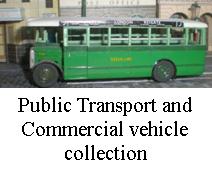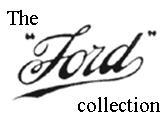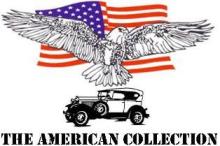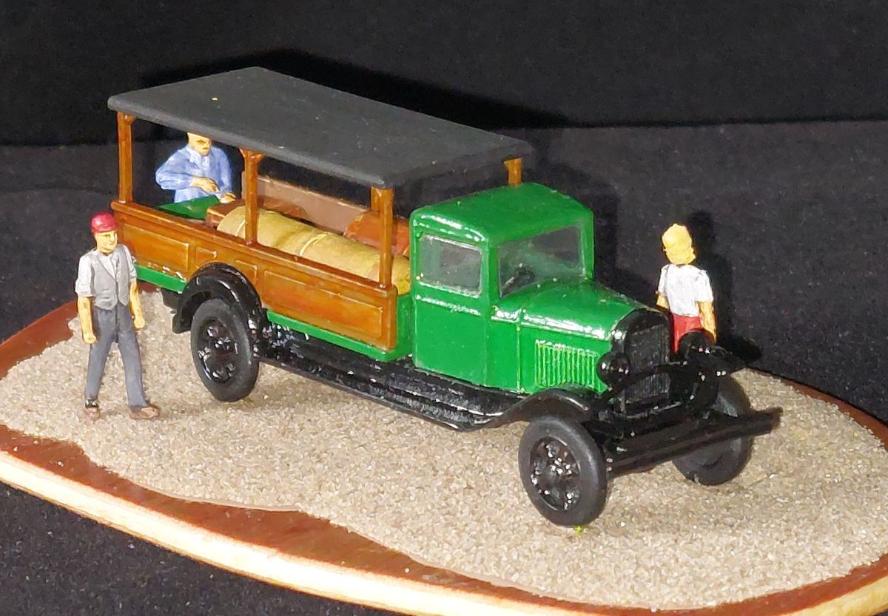
1930 Ford AA produce truck
The title “Model A “ was used in 1903 Henry Ford's new car in his own company (actually his third attempt to get his own firm off the ground; but who's counting). Other people called it the “Fordmobile”. This first generation Ford was in production for two years and 1750 examples were built.
Ford followed this car with what has been labelled “the perfect combination of affordability and reliability”, when he put the model T on the market. It was a remarkable vehicle, both as the car and as the commercial Model TT truck. Multiple bodies could be put on the model TT chassis and all manner of trades were really well served for many years.
Having revolutionised mass production with his moving conveyor belt idea it wasn't long before Ford's competitors cottoned on and started their own versions of his production system. Some streamlined it even more. US customers in the 1920s wanted more than Ford was offering in the model T; and they were happy to pay more too.
Chevrolet were more expensive than Fords but offered more amenities. As the 1920s rolled on Ford's sales declined and in 1926 it was clear to Henry Ford that the model T had had it's day. The T series had become obsolete and in need of replacement, but not just and upgrade, Ford realized his new car needed to be more stylish, a stronger, more powerful vehicle, but one still capable of dealing with rural roads.
In 1926 all production in Henry Ford's plants was halted for six months while the retooling for the new car and commercial chassis was undertaken. The car, unveiled on the 20th of October 1927, was the “Model A“, named in honour of the first car Ford had produced. The new truck continued the previous double letter system as the “Model AA”. The vehicles went on sale from the 2nd of December, 1927.
An eager populace waited to see what Ford's replacement for the venerable “Model T” would be like. What they saw was not a disappointment.
The “Model A” was a completely new car. More sophisticated, stylish and elegant. A more congenial driving position with more features which, despite being more complex, was, in comparison to its predecessor, an easier car to drive.
Henry Ford's son, Edsel, was heavily involved in this new vehicle design which probably helped with the new styling. However, Henry Ford would be the designed of the mechanical components. The chassis design and mechanical development moved forward quickly. This was important as, like the “Model TT”, the “model A” would formed the basis for the “AA” truck chassis. Using the model A automobile platform and shared components a reinforced, heavier and sturdier chassis frame with a longer wheelbase, was designed to accept the heavier cargo loads. It was rated as 1.5 tons. The 12-inch I-beam front axle and an strengthened and larger rear axle also formed part of the equation.
A simple and reliable inline four cylinder engine of 3.3 litres provided 40hp and plenty of torque. Coupled to a three speed manual gearbox, with a lower ratio gearing, made moving heavy loads easier but led to a top speed of around 30mph. Mechanically operated four wheel braking was also fitted.
Along with the chassis the “AA” shared parts and materials from car such as body panels and interior parts, although generally the “AA” had a plainer more workmanlike interior. Safety glass was used in all the windows.
Ford once again created a versatile vehicle. Panel-truck bodies could be fitted to either chassis, for light and heavy commercial work. Several body design styles were developed and put out to contract with manufacturers Briggs and Murray.
All in all, the Ford “Model AA” was a versatile vehicle, designed for hard work; and it proved to be a popular truck amongst buyers.
The key feature of the 1929 Ford Model AA truck was the 3286cc engine. Sitting the front of the chassis and driving the rear wheels it was an inline 4cyl, consisting of a cast-iron cylinder block and L-head unit on top. An up-draft carburettor fed fuel into cylinders with a bore and stroke of 3.9in x 4.3in, using a compression ratio of 4.22:1 gave 40 horsepower at 2,200rpm, twice as much as the old Model T engine, and a torque of 128Ft-Lbs at 1000rpm. That's plenty of power for the sort of work the Model AA truck was expected to be undertaking. The top speed of 33mph might now be considered meagre, but was more than enough considering how much unpaved road there still was at the time. One definite plus of this is an average fuel mileage, on hard standing roads, of over 40 miles per gallon; quite exceptional.
Other features of this robust engine were the 3 main bearings, mechanical oil and water pumps and a six-volt generator that ran fed the battery and a 6-volt electrical system which included an electric starter motor; although the engine could be started by hand using a hand crank which fitted through a hole at the base of the radiator shell. Talking of the radiator in the AA ,this was one of the few things different to the Model A car, in that it was a four-row radiator to give additional cooling under load.
A simple design that was easy to repair and maintain, this engine made life much easier for the rural farmer and the industrial haulier alike. Something that helps keep costs down is always welcome.
The engine was connected to the gearbox through a single dry plate clutch. Initial gearbox in the Model A car was a manual three-speed sliding-gear transmission, with one reverse gear, which was carried over to the AA chassis.
A four speed manual unit soon became available. This featured a "granny", "creeper", or higher reduction ratio first gear, than on a Model A Ford which provided more torque to move a loaded truck.. 2nd and 3rd gear were much the same as the car but the 4th gear was a little higher. Another feature of the AA gearbox was a shift knob mounted lock-out for reverse gear to prevent accidental engagement of reverse while the truck it was in motion.
While not a particularly exciting this was a reliable unit for the long-distance travel and demands of everyday hauling.
The Model A and AA both followed the standard drive layout of front engine, rear wheel drive. Early AA trucks had a worm gear rear drive which put a limit on the trucks top speed. This was replaced later by a ring and pinion differential. Top speed for the AA truck was boosted to around 40 to 45mph. Later still, the option of a high, or low ratio rear differential was provided and braces on the outer casing of the diff' provided extra support and strength to the rear end.
To carry heavier loads without looking at the wheels was a bad idea. Initially the AA used the higher rated wire spoked wheels similar to the Model A car. However they were changed in 1929 when 20in', 6 slot, steel disc wheels by Budd were introduced. By 1932 these wheels were modified with a raised centre reinforced the wheel and allowed better spacing for dual rear wheels so the tyres didn't rub together.
The dual wheel layout opened the door to a variety of heavier body styles for fire appliances, recovery trucks, tankers and dump trucks. Ambulances, buses, and hearses got their own special wheels.
Interestingly, all these wheel types required changes to the wheel nuts for each wheel design.
Equipped with oversized mechanical drum brakes on all four wheels, the brakes were adequate for the speeds of the vehicle and the expected loads the truck would carry. Brakes were proportioned with more bias toward the rear drums.
Suspension was be leaf springs, again, common for the time, with the rear springs being attached to the Chassis rails and shackled to the rear axle. The front spring was mounted transversely above the front axle, centred by the front ‘A’ frame. Shock absorbers were an option, but for the front axel only. These were of the Houdaille hydraulic shock absorber style patented by Maurice Houdaille in France and made under licence by the Houdaille Shock Absorber Co., Inc. in New York City.
Clearly not designed for speed or agility the Model AA did give a reasonable ride, partially due to the large wheels and wide wheelbase; 131.5inches (3,340mm) or 157inches (4,000mm). It was considered stable and easy to handle when driven at reasonable speeds.
A 10-gallon fuel tank was fitted allowing for a good range for deliveries and haulage work.
As might be expected the interior of the 1929 Model AA truck cab was somewhat spartan, functionality over comfort. A simple bench seat with minimal padding was normal for the time. A driver and passenger, possibly two could fit in the space of the cab. Some versions had a hinged top windscreen for ventilation and the doors had hand cranked windows too.
A straightforward dashboard held the basic instrumentation, speedometer and odometer, fuel gauge, amp gauge, etc. The start key and pop-out locking switch are also on the dash' and a three-stop switch for parking lights, headlights and high-beams. Below the dash', to the right, is the choke.
Simple controls for the horn and lights fitted to the steering wheel boss and the column. Around the centre boss were the two levers that manually control the advance and retard of the timing on the left and the right lever is a manual control for the throttle. So positioned for easy adjustment of the engine idling speed and throttle control when changing gears.
All controls are mechanical, although later models did have vacuum powered windscreen wipers replacing the hand operated ones. The hand brake was a floor mounted lever with a release button on the top.
Unlike today's designs, safety was not a primary concern in the design of the Model AA. However, the heavier frame and wider track did give a better level of stability than the cars or light vans of the time.
That said there were items to add to practical safety for the vehicle. Such as the Motometer. A temperature gauge mounted into a radiator cap.
Height, width, length and weight of the vehicles depended on the body styles and equipment of the customers needs.
Bodies
The Model AA truck had many options for the commercial customer. Different chassis length options really helped with the flexibility of the platform too.
Ford Corporation built some “specialty” bodies some of which were outsourced to other body manufacturers such as Briggs and Murray. For Corporate clients Ford would produce fleets of vehicles with custom paint options and other modifications as specified. One customer was the U.S. Postal service which was trying to streamline it's postal and parcel trucks to ease the complexity and cost running such a variety of vehicles. They had custom-built postal truck bodies by Mifflinburg Body Company on the Ford Chassis.
More common configurations included the open flatbed platform truck, stake bed trucks with stake sides for additional cargo support. Panel trucks for transportation and deliveries, dump trucks, some with equipped with hydraulic powered dump systems which were of great for construction and agricultural.
The US staple Pickup truck, an Express Pick-Up and Deluxe Pickup trucks as well as hearses (funeral coaches), Ambulance versions, and a garbage truck.
For those customers choosing their own after-market custom made body styles a cab-only chassis option. Apparently Chicago gangster, Al Capone, took advantage of this to have a his own 1929 Model AA beer truck.
Possibly the most interesting option was the Cab-over truck. A special design putting the driver’s cab directly over the engine in the 'Forward control' position. This had the benefit of offering a much larger payload area.
The new Ford Model A, and AA truck were a big step forward from the Model T and TT series. More stylish, more standard equipment, advanced features and a very good price made the new Fords an immediate success. Production of the Model A began on the 1st of November, 1927, with AA truck introduced concurrently. Series production ran from 1927 to 1931. Body changes occurred between 1929 and 1930 with mechanical upgrades or changes occurring as they became available. That said, leftover parts were used up first so the inclusion of upgrades isn't consistent. Some of this was exacerbated by production delays that left customers waiting up to nine months at one point. The 1929 year was special for Ford. They beat Chevrolet in sales, and, set a new record for truck sales too. Overall, Ford’s peak production period for Model A cars and trucks saw 1,515,100 units sold. Price had much to do with it. The original Model A car was $365 and the open cab Model A pickup was $445.
Across the lifespan of the Model A car Ford licensed the manufacture overseas. Countries in mainland Europe, including Denmark who used the chassis for three different armoured vehicles. Ford of Britain's Dagenham plant started Model AA production in October 1931, the first vehicle produced at the new facility. Even the Soviet Union was building the Model A and AA. GAZ producing over 985,000 AA trucks between 1932 and 1950.
Ford Model A and AA produced topped at least 4,320,446. Sadly, even Ford couldn't outrun "Black Tuesday". The day the Great Depression started. Stock markets fell, and sales fell with them.
Legacy
Although the Model AA was in production for just four years it proved to be a special, and an auspicious design. Significant for Ford, the AA would become for the US what the Transit would later be to the UK. A workhorse for agriculture to construction, small businesses and large fleets, the Model AA Truck's versatility, rugged durability and reliability set a bench mark at a time in which the commercial vehicle was starting to become an integral part of the US economy. During a period of financial hardship this model cemented Ford’s reputation as a serious choice for businesses and industries.
Most of the roads were terrible dirt roads, potholes, mud and water making them little more than farm tracks. Any sort of weight loading down a truck and you needed plenty of power to move it. A more robust and work-focused vehicle, the AA created Ford's commercial and industrial vehicle movement worldwide.
Often called “the backbone of American industry” at the time (just as the Transit van was advertised as “the Backbone of Britain”), the AA is now considered one of the worlds earliest mass-produced trucks and as such is a tremendously important step in American commercial automotive history.
Ford’s innovation was widely popular at the time and remains very popular to this day. A classic of early American commercials enthusiasm for the Model AA at vintage car and truck shows is huge and preserved and restored are highly valued. Specialist clubs exist for the Model A car and Model AA trucks to assist owners and fans alike.
More than that, in certain countries Model AA trucks continue do carry out their work.
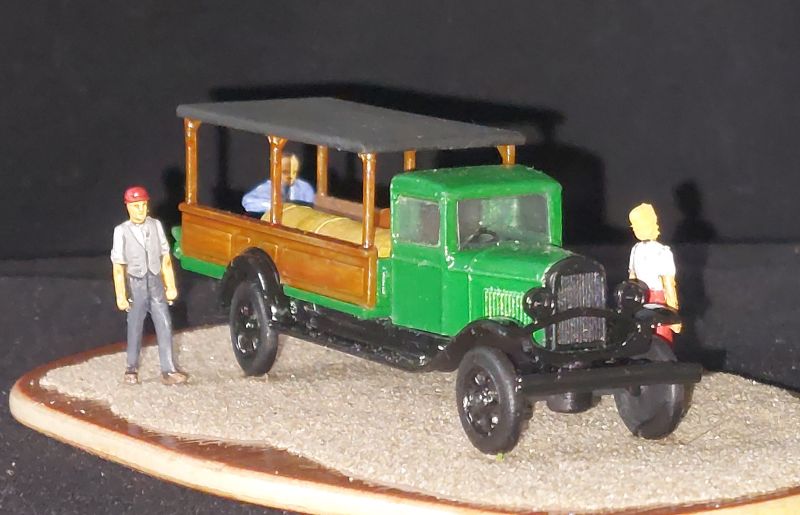
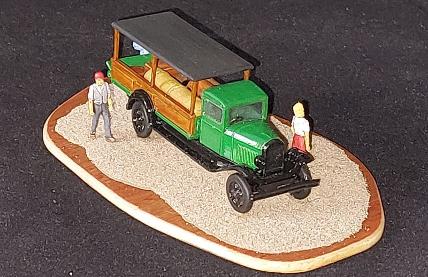
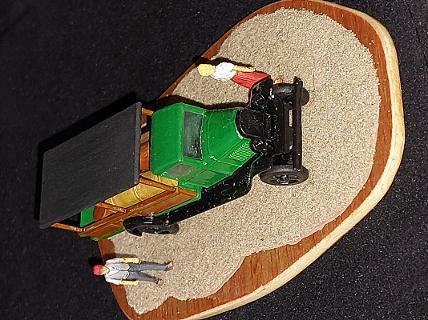
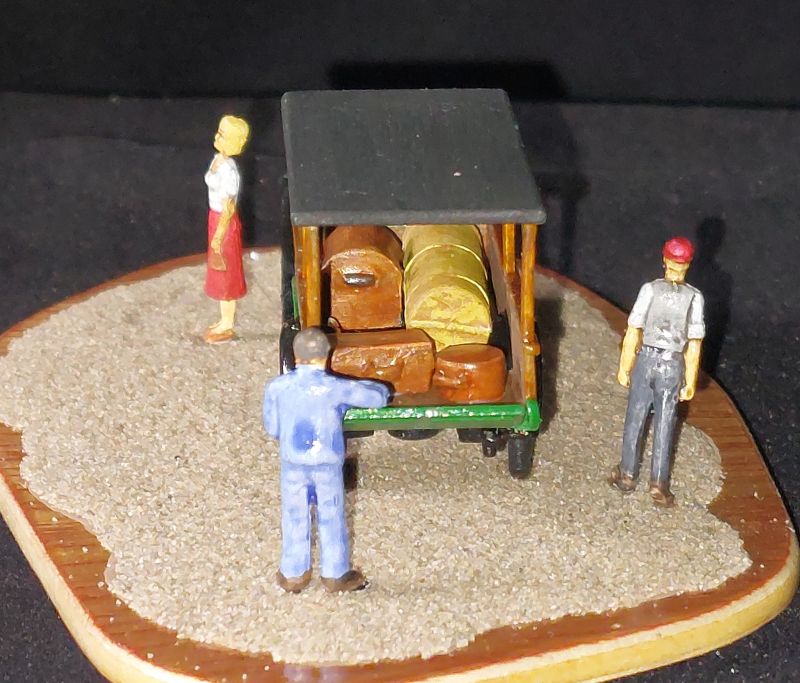
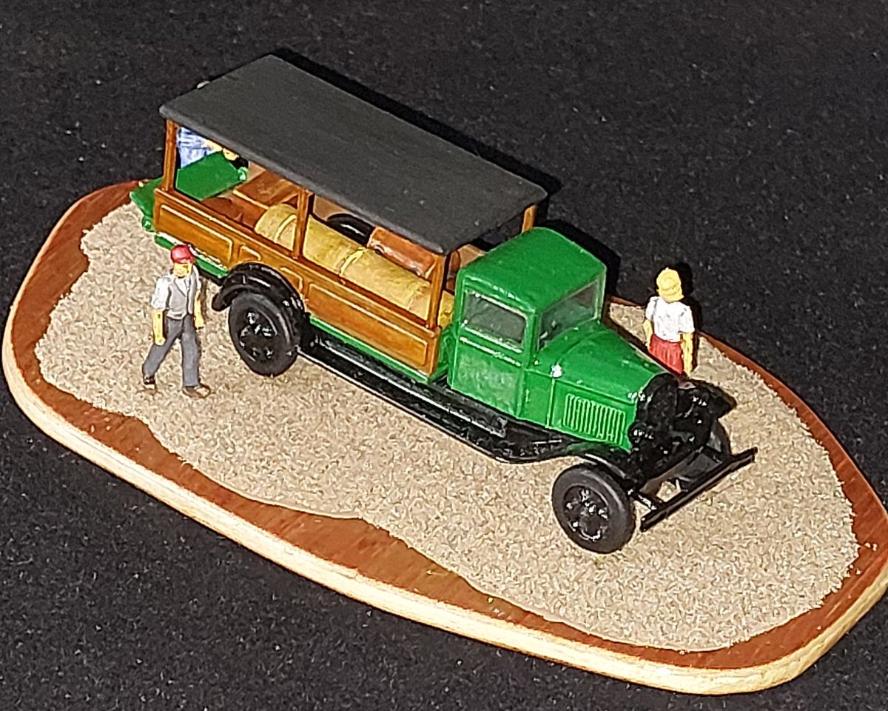
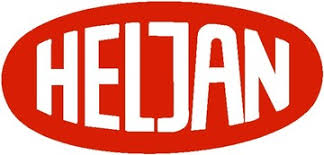
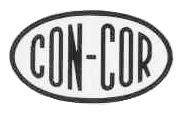
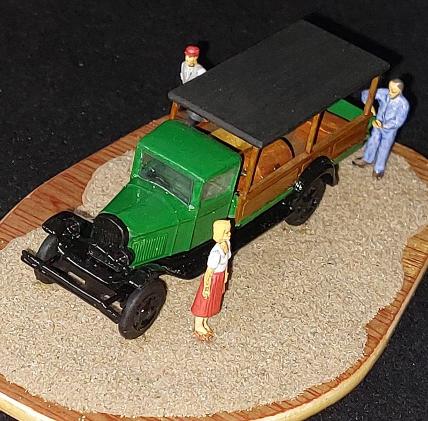
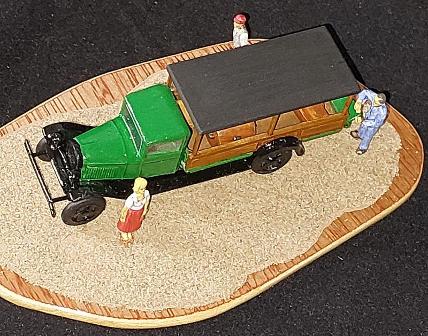
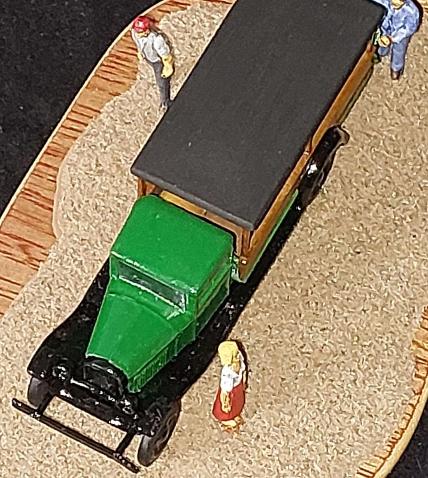
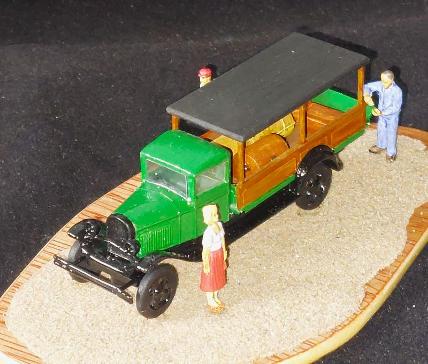
Sometimes a kit just piques your interest, sometimes a kit is just to cheap to ignore, sometimes you have never seen the kit before, and sometimes you just need some retail therapy at 3a.m. when you can't sleep and have pressed a button before you have realised it! That's how Ian got this kit. All those factors aligned, and despite always saying don't look on the internet in the middle of the night; well, you know.
Our model was finished by Ian in March 2025. The Heljan kit is small and simple, and equally as flexible as a chassis. As you can see from the photos a range of body styles were produced, some of the kits are really hard to find but other turn up quite often and usually at reasonable prices. These kits simply don't match up to the standards of today, but the subject matter is unusual. I doubt any firms are likely to release a kit of a model A truck in this scale any time soon!
There is no cab interior, in fact the whole kit is short on detail. But what is on show is good enough to work with. Ian made a steering wheel and dash', seating and windows. A base often works well with these little models as figures add some scale size and context. These figures, from various sources, help create a seen from which the viewer can make up their own story.
Heljan is a Danish model railway company founded in 1957 by serving police officer Niels Christian Nannestad. At the time the firm produced card kits of railway buildings and other scenic products and accessories followed.
In 1962 the company purchased their first plastic injection moulding machine and was soon looking for space. A purpose built factory was ready to open in 1966, in Søndersø. Through the 1970s Heljan expanded into 1/87th scale, HO gauge, model locomotives and rolling stock. Initially these were Danish subjects but later British subjects in OO gauge were produced. In the 1990s the firm began producing ready-to-run HO models not just body kits.
Heljan built links with many other model firms across the world, particularly strong ones on Britain. Today the firm is very well known for its high-quality model railway locomotives, rolling stock, buildings, and accessories. Many of which are British from the diesel and electric era.
They also have a large range of model vehicles, largely construction and commercial trucks and plant machinery, but also fire appliances and some cars. Our model, released under Heljan and Con-Cor labels is kit# N37 in HO gauge, 1/87th scale. This is one of the earliest of the Heljan vehicle kits range. Both Ford and Mack chassis and cabs were produced and each had a variety of bodies produced to fir the same chassis. At least four variants of each 1/87 scale truck went on sale; but with the same boxes. No name or indication of which kit is in the box other than the kit number. The purchasers knew it was one of the Ford, or Mack, trucks from photos on the box, but which one? Presumable there was a list put up in store to inform customers, otherwise we could see a lot of people opening boxes and asking at counters to find out what they were buying.
Heljan/Con-Cor also released some early Revell Chrysler cars and Con-Cor articulated lorries based on the Ford C tractor. A car transporter, hauler and long dropside trailer. Most of these moulds are now past repair but do come up on the various auction sites; with suitably high asking prices!
But who are Con-Cor? Con-Cor International was founded in Chicago, during 1962, by Jim Conway and his father and uncle. Largely working in importing and distributing HO and N gauge model railway products from around the world, Con-Cor also did some manufacturing. This took the form of buying old tools from other manufacturers then reissuing the kits. This might have been reasonable financially but the wear on the moulds meant the kits were lower on the quality scale.
Like Heljan, Con-Cor developed a lot business relationships and by1966 were US representatives and importers for many of the worlds top manufacturers. Con-Cor moved to Tucson, Arizona in the 1990s when they purchased LaBelle Industries, another firm that had a wide range of model railway products. LaBelle also had their own range of model lubricants and model making products too.
Con-Cor continue to produce models and kits in both HO and N gauge today, often commissioning many North American models from Kato.
